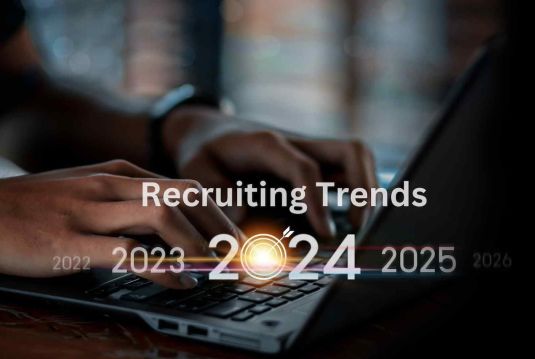Proximity Bias
Part 3 of the Coopers Blog Series on Unconscious Biases

Working has changed radically since the pandemic began. Employees across the globe have come to know and love the benefits of remote work. Understandably, few want to give up these newfound benefits. A hybrid work model, combining office time and work from home is the most promising solution to unite employee and employer needs. The benefits of remote work cannot be downplayed, ranging from flexibility, less commuting hassle to a better work-life balance. And yet, all that glitters is not gold.
Working from home: privileged or outsider?
Remote work has its disadvantages, too, and these are not given enough weight in the current discourse. Because in the office, too, one rule applies: out of sight, out of mind. For example, supervisors unfairly favor employees who are around more – in a hybrid work environment, that is those working in the office instead of from home. They are perceived as more productive, more reliable, and ambitious, they have advantages in the distribution of tasks, better opportunities for promotions and usually earn a higher salary.
The reason for this inequity is the proximity bias – an unconscious cognitive bias, which we already know from our Coopers blog series on unconscious biases. In that series, we already covered the impacts of the affinity bias and the confirmation bias on the world of work. Today's part 3 of the Coopers series on unconscious biases is about the proximity bias.
Unconscious bias #3: Proximity bias
Proximity bias causes us to base our decisions not on objective criteria, but on things and people in our spatial proximity. For example, a supervisor casually seeks input from employees she meets in the office. Based on this, she judges them as more helpful and better employees – even though her employees working from home could have provided input that is just as good or perhaps even better. In the long run, this creates the risk of a two-tier workforce, with remote colleagues getting the short end of the stick.
Our goal with this article is to draw attention to this problem. As we wrote in the first post of our blog series, it is essential to sensitize employees to unconscious cognitive biases.
- Addressing employees, we want to highlight the pitfalls of remote work due to proximity bias. Some groups are more affected than others, such as working mothers. They often work part-time and are therefore less present already. At first glance, hybrid work models seem like a blessing to joggle both career and family – however, remote work reduces their visibility even more. Due to proximity bias, their career opportunities may decrease instead of increase in the hybrid setting. The same holds true for employees who (have to) care for dependents.
Our advice: Employees should openly discuss with supervisors when and why they work from home. This demonstrates that they see the bigger picture and are organized instead of leaving a subconscious impression of "they-don't-even-make-it-to-the-office".
- Addressing managers in leadership roles, we would like to share four tips for making objective decisions in the hybrid setting to ensure equal treatment of the entire team. Step one being to build awareness of the proximity bias and its negative impact on organizational performance.
Managerial skills: 4 tips on how to avoid proximity bias
1) Supervisors working from home
To establish a hybrid work model, managers should set an example and work from home sometimes. As actions speak louder than words, this strengthens the acceptance of hybrid. It is good to see the boss joining a video call from home. It puts employees at ease and ensures them, that their work performance is appreciated, regardless of where it is done.
2) Hybrid meetings
Hybrid meetings include participants onsite as well as online. They differ strictly from solely virtual meetings, in which all participants take care of login, technology, et cetera themselves. Hybrid meetings require more planning. To make sure nothing goes wrong, the following three points should be considered:
1) Send documents in advance: Have everyone on the same level by sending out relevant documents, KPIs et cetera in advance.
2) Clear tasks: For a smooth hybrid meeting, there should be a moderator to actively involve both parties and ensure everyone's inclusion; technical support to take care of technical issues (before and during the meeting); an onsite speaker to summarize what was said onsite (if necessary); a minute-taker to document the meeting's progress and make it available to everyone afterwards (this comes in handy in case of technical problems and for absent colleagues in general).
3) Solid technology: A projector for larger image transmission is ideal in hybrid meetings. Also, a camera and microphone onsite, so that the online participants can see and hear all onsite colleagues.
Another option: Onsite participants can join the meeting online. They are then present in the meeting onsite and online, thus building a bridge between the two parties. This loosens up the overall situation and prevents the formation of fronts.
3) Alternate physical and virtual meetings with the same employee
Supervisors should alternate between physical and digital bilateral meetings with each employee. That build working relationships in both environments and gets everyone acquainted with the respective channel. It lowers the inhibition threshold and makes collaborating easier. A simple example: It saves time and nerve in finding appointments if it is perfectly fine to arrange a video call instead of an onsite meeting. The freed capacity can be invested in actual work and thus promotes productivity.
4) Results-driven work assessment
A results-oriented workflow can evade the proximity bias. Positive feedback and career opportunities are given those who achieve their goals, meet deadlines, et cetera – regardless of where they work.
So, what's next: Eliminate offices? No more remote work?
Neither. Without offices, the office grapevine disappears and with it the sense of unity, leading to a loss of company culture in the long run. Having a meaningful job is more than completing tasks. Rather, it means to be part of a community with a shared mission. Social feedback and interactions are essential to make it a mission of success. And yet, the benefits of remote work are tremendous and should not be forfeit. Therefore, we are convinced that the solutions lies in the middle: future working models will be hybrid. The question is rather, what kind of hybrid models will evolve over time. In Tim Cook's words: "We're running a pilot and trying to find a place that makes the best of both of these worlds." The key is to find models combining the advantages of in-person and virtual engagement. This can look different in the future than it looks now, especially considering the developments of artificial intelligence and virtual reality. What is important: The solutions need to address the dangers of the proximity bias and reduce it as much as possible.
At Coopers, we are currently trying to get a hang of the hybrid work life and are happy to talk further about this topic. What are your experiences so far? What do you want to maintain, what do you want to do differently?
Feel free to drop us a line via Email or on social media on LinkedIn, Facebook, Instagram and Twitter.
Your Coopers Family
Photo by Laura Davidson via Unsplash.com
Career

The Value of Experience and Expertise in Recruiting
Coopers is your recruiting partner: Benefit from our experience and expertise ranging from job search to contract negotiation.

Top 7 Recruiting Trends
Top 7 Recruiting Trends – from automation top data-driven recruiting.

Coopers Bern
Recruitment in Bern: We support you with recruitment, contracting, executive search, project recruiting and more.
